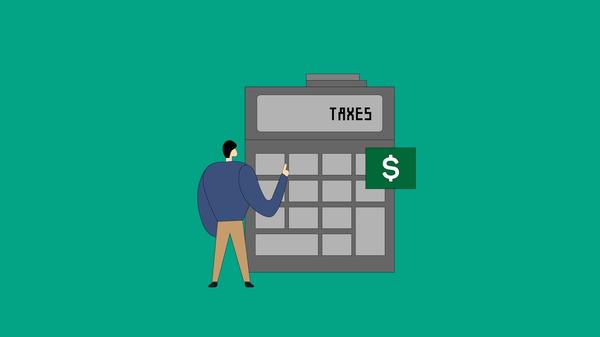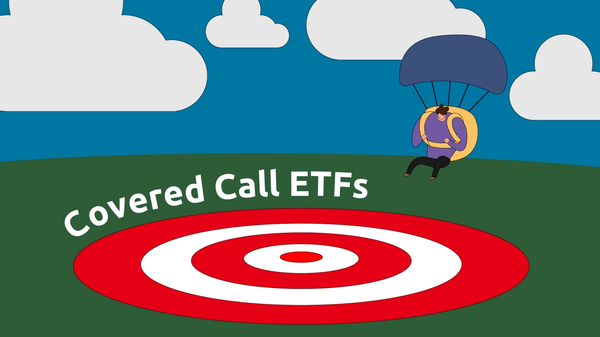You can take control of your finances in just 30 days, if you do things right. Follow this list for a tip each day of the month across these eight categories:
1. Budgeting Tips
2. Emergency Fund
3. Debt
4. The Basics
5. Free Money
6. Vehicles
7. Home ownership
8. Investing
Start your month of financial freedom with Day 1.
BUDGETING TIPS
Day 1. Track where your money goes.
Before you do anything else, go through your expenses from the past month or two and understand where you’re spending money. What spending makes you happy, and what makes you unhappy? Remember that for the next tip.
Day 2. Build a budget.
The Government of Canada has an online budget calculator, which you can save by clicking Continue in Excel at the bottom of the page. Others rave about YNAB. Find something that works for you and you’re more likely to keep using it.
Day 3. Follow this budgeting rule of thumb.
Not sure where you should be allocating your money? Make sure bills get paid, you save for the future and then you can set aside some “Fun Money” to do whatever you want.
Day 4. Include infrequent expenses.
Take a closer look at your budget — does it account for infrequent expenses like holiday gifts, new tires and vacations? These “surprise” expenses aren’t really surprises at all. Find out how much it cost last time and start saving up for it now so you’re ready when it comes around again.
Day 5. Stick to your budget.
So, you have a budget but you’re finding it hard to stay within it. Try out the https://www.daveramsey.com/blog/envelope-system-explained envelope system or create separate accounts for Needs, Wants and Savings.
EMERGENCY FUND
Day 6. Build an emergency fund.
You never know what life will bring (car troubles? layoffs at work? surprise twins?) so start building your emergency fund now. Start small, start now. This can go in a high-interest savings account — more to come on those soon.
DEBT
Day 7. Pay off high-interest debt first.
Banish high-interest debts first and you’ll pay less interest over time, and keep more money in your pocket. This is most likely credit card debt. Can you move the balance to a no-interest or lower interest card? Just make sure you don’t use it as an excuse to swipe more.
Day 8. Consolidate your debt.
Debt consolidation makes payments easier and can save you piles of money! Here’s a good primer on it.
THE BASICS
Day 9. Not all chequing accounts are the same.
Does your financial institution hit you with money fees just to bank with them? Use a comparison tool to find an account that better suits your needs — just tick the “no monthly fee” box here.
Day 10. Not all savings accounts are the same.
Just like with chequing accounts, you want your savings account to work hard for you. Shop around for a higher interest rate and earn more each year. Find an account that suits your needs here.
Day 11. Know your credit score.
Do you know what your credit score is? It’s free and nowadays it’s simple to check online here. Once you know your score, you can work to improve it by always paying credit card bills on time and not maxing out your card each month. Find out other things that affect your score here.
Day 12. Beat the credit card companies.
The ~20% interest rate on credit cards turns $10k of debt into $12k in one year, so only put purchases on credit cards if you can pay the full balance monthly. That emergency fund you’ve built up will make it so you don’t need to put emergencies on your credit cards. You can compare credit cards here.
Day 13. Delete credit card details from websites.
Got your credit card details saved on shopping sites? Clear them, especially if you’ll be tempted by Boxing Day (Week?) sales.
Day 14. Ask for a raise.
When you’re getting your financial house in order, it’s not just about watching your expenses. Is it time you asked for a raise at work? Can you look for a new higher-paying job? Can you pick up a second job or create a side hustle?
Day 15. Save raises, bonuses, and tax refunds.
Pretend your bonuses, raises and tax refunds never existed in the first place (ok, you can #treatyoself with 10%). Put them toward paying down any debts or giving your emergency fund or retirement savings a serious boost. It all adds up faster than you think.
Day 16. Track your net worth.
How much do you want to save in a year? Figure out what that number works out to per week, decide where you’ll create those savings, then automate contributions. You ain’t nothin’ but a #goaldigger now.
FREE MONEY
Day 17. Free money: employer match.
If your employer offers contribution matching and you’re not hitting the max, you’re leaving free money on the table. One more time for those in the back: you are missing out on free money. Sit down with your budget and carve out savings to hit your max in 2019.
Day 18. Free money: cashback and discounts.
If you’re already going to be spending during the holiday season, whether on yourself or others, then take advantage of sites like RetailMeNot and Ebates and use a credit card that gives you cash back. The percentages are small but they add up as long as you don’t use this as an excuse to buy more.
Day 19. Free money: RESPs.
Avoid the restricted, high-fee RESP funds peddled by salespeople wandering maternity wards and open your own self-directed family RESP instead. One place you can do this is Questrade (Click See more account types > Education > Family RESP).
VEHICLES
Day 20. Buy used where you can.
It’s never been easier to buy second-hand. Can you get that furniture, fridge, hockey gear, golf clubs, camping equipment (and so on) from someone who no longer needs it? Kijiji, Craigslist and Bunz are great places to look.
Day 21. Know the real costs of driving.
Can you use public transit or ride a bike for some local trips instead of your car? For an idea of what driving really costs, plug your details into the CAA’s calculator.
Day 22. Shop around for insurance.
Set time aside before the end of the year to get insurance quotes, and call to negotiate lower cable and phone bills. The time investment is short, but the potential savings can be big. Try using Ramit Sethi’s great tips.
HOMEOWNERSHIP
Day 23. Rent money isn’t wasted money.
Do the math yourself (remember to include property tax, insurance, maintenance fees, lawyers’ fees, realtor fees, land transfer tax, and so on). Not all areas will have increases in home prices every year, so don’t bank on that (just look at Calgary). If you’re renting, remember to get renters’ insurance. It’s affordable and can really save your bacon.
Day 24. Buy less home than you’re approved for.
Just like we said in tip #23 above, owning a home costs more than the mortgage. Factor in all expenses, including new furniture and appliances you’ll be buying to fill your new home.
INVESTING
Day 25. Understand your risk tolerance.
You’ve paid off high-interest debt, you’ve built up an emergency fund and now you want to start investing. That’s great! The classic balanced portfolio is 60% stocks and 40% bonds, but you may be more risk-averse or risk-tolerant. Find out your risk tolerance with Vanguard’s quiz.
Day 26. Invest in registered accounts.
You can open accounts from the comfort of your couch with Questrade. Not sure which account to contribute to first? Check out this article to get more clarity, but remember that if you’ve got an employer-matched group plan, start there!
Day 27. Understand compound interest.
You don’t need to be Einstein to understand why he called it the eighth wonder of the world: a single dollar invested today could be worth $7 in 30 years. Here’s an explainer on compound interest.
Day 28. Pay attention to investment fees.
Mutual funds tend to have high fees (2%+) that can reduce your final portfolio value by 30%. Switch to index funds and ETFs for the lowest fees. If you’re unsure where to start, one of these popular model portfolios used by Canadians will do the job. The Canadian Couch Potato and Canadian Portfolio Manager portfolios are diversified and balanced for smart long-term investing.
Day 29. Automate your contributions.
If you let yourself decide whether you want to save or invest every month, you probably won’t. Foolproof your future — pay yourself first and automate your finances.
Day 30. Rebalance your portfolio yearly.
Don’t want to do rebalancing calculations yourself? You’re in luck. Questrade users can automate their rebalancing and initiate one-click trades with Passiv, saving you time and making it easy to do investing right.
And that’s all, folks. We hope you found these tips helpful — did any of them stick out to you? Which new personal finance habits are you going to start? What are your money resolutions for 2019?


